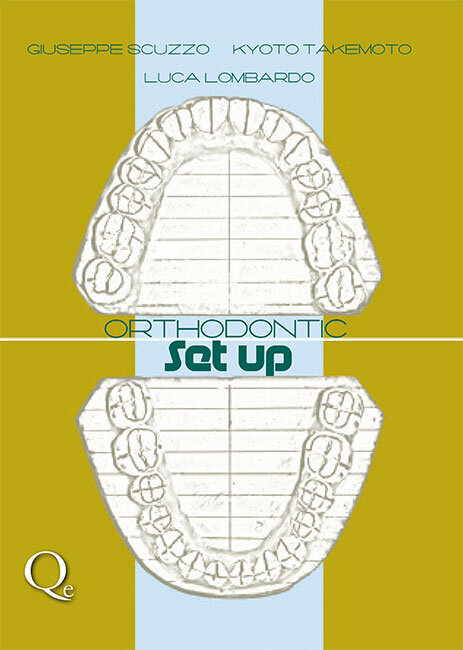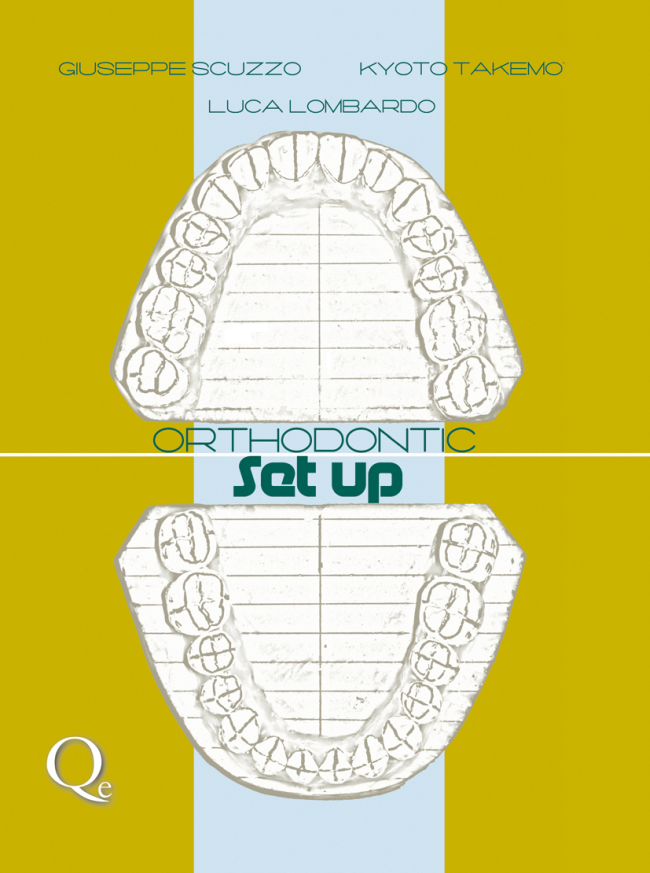Kieferorthopädie, 2/2024
Kieferorthopädische "Perlen"Seiten: 137-139, Sprache: EnglischManzo, Paolo / Paoletto, Emanuele / Guiducci, Daniela / Pellitteri, Federica / Lombardo, LucaThe objective of this clincal article is to describe a new method to assess the accuracy of extra-alveolar miniscrew placement with respect to the digital planning. This is a radiation-free method; thanks to a specially printed abutment, it is possible to obtain two .stl files: one with the digital planning of the miniscrew position and another of the miniscrew placed in the oral cavity. These two files are superimposed with Geomagic Control X Software to assess the discrepancy between the digitally planned and the actual position of the miniscrew.
Schlagwörter: skeletal anchorage, digital planning, radiation free, miniscrew placement, model superimposition
Kieferorthopädie, 2/2023
International OrthodonticsSeiten: 151-167, Sprache: EnglischAlbertini, Enrico / Albertini, Paolo / Colonna, Anna / Lombardo, LucaThis case report describes a complex full-step Class-II malocclusion with protrusion of maxillary incisors in an adult patient treated with lingual straight-wire appliance. The two-fold aim was to obtain an ideal occlusal relationship and improvement of smile aesthetics. This report illustrates that an appropriate treatment strategy, including anchorage control by en-masse distalisation and intermaxillary elastics, is needed to achieve the planned results, even with a completely invisible appliance. The placement of miniscrews on the palatal side provided more space for tooth distalisation, thus allowing the correction of a full-step Class-II relationship. An aesthetic buccal sectional was added in the last two months of treatment to correct the maxillary left first premolar, which exhibited a significant torque discrepancy during en-masse retraction.
Schlagwörter: Class-II, en-masse distalisation, miniscrews, lingual appliance
Journal of Craniomandibular Function, 1/2022
ScienceSeiten: 25-34, Sprache: Englisch, DeutschManfredini, Daniele / Lombardo, Luca / Visentin, Alessandra / Arreghini, Angela / Siciliani, GiuseppeEine elektromyografische UntersuchungZiel: Ziel war es, in einer Gruppe gesunder junger Erwachsener anhand häuslicher EMG-/EKG-Aufzeichnungen mit einem tragbaren Gerät den Zusammenhang zwischen der Zahnabnutzung und der Schlafaktivität des Musculus masseter (SAMM) zu untersuchen.
Material und Methode: Insgesamt 41 gesunde Freiwillige (23 Frauen und 18 Männer im Durchschnittsalter von 28,8 Jahren, Spannweite 25 bis 40 Jahre) mit natürlichen Zähnen in gutem Zustand führten zu Hause zwei Nächte lang Aufzeichnungen mit einem tragbaren Gerät durch, dass die simultane Erfassung von EMG-Signalen beider Mm. masseteres sowie der Herzfrequenz ermöglicht. Hiermit wurde die Anzahl der Schlafbruxismus-(SB-)Episoden pro Stunde, die Anzahl phasischer, tonischer und gemischter SAMM-Ereignisse pro Stunde und die Gesamtanzahl von SAMM-Ereignissen pro Nacht ermittelt. Zudem wurde bei allen Probanden an digitalen Modellen mithilfe einer sechsstufigen Skala die Zahnabnutzung bewertet. Schließlich wurden mithilfe des Pearson-Tests Korrelationen zwischen den SAMM-Parametern und der Zahnabnutzung geprüft.
Ergebnisse: Der SB-Index lag im Durchschnitt bei 4,5 ± 2,6, die Gesamtanzahl der Masseterkontraktionen im Schlaf bei 97,2 ± 55,2. Von diesen Kontraktionen waren fast 60 % phasischer Natur. Die durchschnittliche Zahnabnutzung betrug 1,5 ± 0,7, wobei die Eckzähne und Unterkiefer-Schneidezähne die stärkste Abnutzung zeigten. Keiner der gepaarten Tests ergab eine signifikante Korrelation (p-Werte: 0,11 bis 0,69). Die r-Werte bewegten sich im Bereich von 0,064 bis 0,253.
Schlussfolgerung: Die Nullhypothese einer fehlenden Korrelation zwischen Zahnabnutzung und SAMM konnte nicht abgelehnt werden, was bedeutet, dass Zahnabnutzung nicht als Indikator für rezenten SB oder für SAMM fungieren kann. Künftige Studien, in denen die vielschichtige Natur von Zahnabnutzung und der komplizierte natürliche Ablauf von Schlafphänomenen Berücksichtigung finden, sollten das Problem auch auf individueller Ebene weiter untersuchen.
Schlagwörter: Elektromyografie, Kaumuskelaktivität, Schlafbruxismus, Zahnabnutzung
Journal of Oral & Facial Pain and Headache, 2/2019
Seiten: 199-204, Sprache: EnglischManfredini, Daniele / Lombardo, Luca / Visentin, Alessandra / Arreghini, Angela / Siciliani, GiuseppeAims: To assess the correlation between tooth wear and sleep-time masseter muscle activity (sMMA) in a group of healthy young adults who underwent home electromyographic/electrocardiographic (EMG/ECG) recordings with a portable device.
Methods: A total of 41 healthy volunteers (23 women, 18 men; mean age 28.8 years, range 25 to 40) with good natural dentition underwent a 2-night in-home evaluation with a portable device that allowed a simultaneous sleep-time recording of EMG signals from both masseter muscles and heart rate. The number of sleep bruxism (SB) episodes per sleep hour (SB index), the number of phasic, tonic, and mixed sMMA events per hour, and the total number of sMMA events per night were calculated. All individuals also underwent an assessment of tooth wear on digital casts with the adoption of a six-degree rating scale. Correlations between sMMA variables and tooth wear were assessed using Pearson test. The null hypothesis was that correlation between the two conditions would not be significant.
Results: On average, the SB index was 4.5 ± 2.6, while the total number of sleep-time masseter contractions was 97.2 ± 55.2. Of those contractions, almost 60% were phasic. Average tooth wear was 1.5 ± 0.7, with the canines and mandibular incisors showing the highest wear scores. For all pairwise analyses, correlation values were not significant (P values .11 to .69), with r values ranging from 0.064 to 0.253.
Conclusion: The null hypothesis of an absence of correlation between tooth wear and sMMA could not be rejected, implying that tooth wear cannot be used as an indicator of ongoing SB or sMMA. Future studies taking into account the multifaceted nature of tooth wear and the complex natural course of sleep phenomena are encouraged to investigate the issue further, at the individual level.
Schlagwörter: electromyography, masticatory muscles activity, sleep bruxism, tooth wear
Journal of Aligner Orthodontics, 1/2018
Seiten: 21-29, Sprache: EnglischArreghini, Angela / Beretta, Arianna / Lombardo, Luca / Almoni, Claudia / Siciliani, GiuseppeObjective: The aim was to conduct a semi-objective analysis of phonetic alterations in patients during the first 24 h after being fitted with F22 aligners. Our secondary objective was to analyse the patients' perception of any speech impediments caused by the aligners, and the impact of such alterations on their daily lives.
Methods: Thirty patients were given the Fanzago articulation test at three different time points defined as T0 (before aligner fitting), T1 (immediately after aligner fitting) and T2 (24 h after aligner fitting), and results were evaluated independently by three speech therapists. Patients were also asked to fill in a questionnaire consisting of six items on their perception of any phonetic alterations provoked by the aligners, and the influence of this on their daily lives.
Results: The results of the semi-objective analysis based on the Fanzago articulation test revealed the alteration of only three phonemes of the 28 assessed, specifically "s", "ts" and "ʃ". Furthermore, these alterations were only found in four out of 30 patients at T1, and three out of 30 patients at T2. The questionnaire revealed that 28 out of 30 patients perceived some speech anomalies, but that this had no significant impact on their daily lives.
Conclusions: These findings show that F22-aligner therapy has no significant impact on patients' phonetic articulation; the alterations detected were slight and involved only three phonemes, "s", "ts" and "ʃ".
Schlagwörter: F22 aligner, orthodontic aligners, phonetic alterations
Journal of Oral & Facial Pain and Headache, 3/2016
Seiten: 249-254, Sprache: EnglischManfredini, Daniele / Arreghini, Angela / Lombardo, Luca / Visentin, Alessandra / Cerea, Silvia / Castroflorio, Tommaso / Siciliani, GiuseppeAims: To determine whether there is a correlation between any psychological features and sleep bruxism (SB).
Methods: A total of 36 healthy volunteers underwent an in-home evaluation with a portable device combining electromyographic (EMG) and electrocardiographic (ECG) recordings for the diagnosis of SB. They were administered questionnaires that assessed state and trait anxiety levels and coping strategies. The study hypothesis was that the SB index was significantly correlated with an individual's anxiety and coping. Correlation between SB index and psychological features was assessed and a comparison between SB prevalences in subjects with different psychological scores was carried out.
Results: Correlation analysis showed that the SB index was not correlated with any of the psychological scales; however, there were some significant correlations (r values range from 0.393 to 0.458) between the SB index and specific items from the trait anxiety and coping scales. Crosstabulations of subjects with SB and with high (overmedian) or low (undermedian) scores for the various psychological measures revealed significant correlations between the prevalence of SB in higher-scoring subjects for state anxiety scores (Phi coefficient = .456; P = .006), trait anxiety scores (Phi = 0.369; P = .027), and social support coping strategy (Phi = 0.387; P = .020).
Conclusion: These findings support the study hypothesis only in part and confirm the absence of a clear-cut relationship between SB and psychological features.
Schlagwörter: anxiety, bruxism, coping, personality, psychology, sleep bruxism





